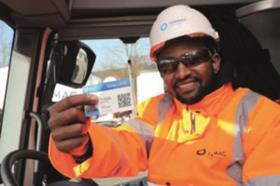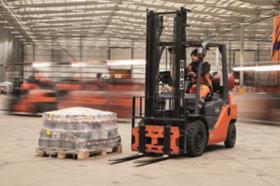
The winner of the Best Use of Technology award, sponsored by Bridgestone, will be revealed tonight at the Motor Transport Awards 2018. Shortlisted in this category are Cawleys; Eddie Stobart Logistics; Tarmac and Palletforce.
![]()

With an aim to joining DVSA’s earned recognition scheme, Luton-based waste management operator Cawleys set about transitioning its fleet management system from a time-consuming paper-based system to a real-time digital platform. The company identified that many employee hours were spent dealing with the paperwork necessary to run a compliant fleet. In particular, it found daily driver vehicle checks very time intensive with challenges such as poor handwriting and a need to cross reference schedules. As earned recognition required online real-time connectivity, Cawleys decided to rollout the R2C system, which it implemented within two months. It set its own KPIs, in addition to those required by the DVSA and demonstrated significant efficiency gains as well as achieving its aim of being the first waste haulier to obtain earned recognition status.
The judges praised Cawleys’ clear identification of a challenge and liked the communication with all employees to ensure buy-in and drive a cultural change across the business. They also thought the entry was a great example of an SME embracing innovation.

Haulage giant Eddie Stobart Logistics wanted to overhaul its in-cab telematics system and move to a scalable platform based on contemporary technology that offered options for Android, IOS and Windows. Working with telematics firm Microlise, it created the Eddie Stobart Link. The system was designed to boost efficiency, customer service and safety, and be as intuitive and user-friendly as possible for drivers. Since implementation, Eddie Stobart can now manage and monitor its fleet to a much more detailed level, enabling planners to route vehicles more efficiently and give customers more transparency. The company has also improved fleet safety, through electronic logging of vehicle safety checks and clearer ability to analyse driving style and behaviour.
Judges praised the clear identification of areas in need of improvement and excellent use of latest technology. They also liked the fact the system was not only real-time, but also end-to-end in its capabilities, which they said is an essential tool for today’s planners.

With approximately 11,000 drivers to manage, a large proportion third-party hauliers, Tarmac needed a more efficient way to manage driver records and identify permits and qualifications for site entry requirements. It introduced the OneCard, which offers real-time data on individual drivers, controls on-site access permits and registers all face-to-face safety conversations. It piloted the card in summer 2017, with an aim to have 3,000 contracted drivers on the scheme throughout 2018 at 350 operational sites. Tarmac has, to date, rolled out OneCard at 20 sites to more than 1,500 staff, including drivers, weighbridge operatives and plant managers. The system has also improved safety by flagging up 180 drivers for ‘lack of competency’, who have subsequently been retrained – a task that proved more challenging with a traditional paper-based approach.
The judges felt this was a strong submission and the technology had potential not only for Tarmac but also as a wider industry solution. They said the strong emphasis on safety and improving compliance through technology really stood out.

Palletforce wanted to make hub operations more efficient, especially in relation to competitors, while also promoting safe operations across its membership. It wanted to efficiently track and weigh pallets during the nightly sorting process while speeding up operations. Instead of the “laborious and slow” traditional method of hand scanning pallets in and out of a hub, Palletforce decided to use new technology to improve this process. Working with external partners, it designed Super Fork Lift Trucks, developed in two stages. First, each fork-lift truck was equipped with patented weighing technology to enable every pallet passing through the hub to be weighed in less than a second, which includes an anti-vibration plate for accurate measurement when the vehicle is in motion. Second, new imaging and scanning software was developed and introduced. The technology has boosted sorting efficiency by 20%, helped slash damaged pallets by 60% and reduced turnaround times by 20%.
The judges said this was a very good innovation in the pallet sector, with clear identification of the problem to be solved and impressive outcomes. They also liked that the technology benefitted the entire member network.











